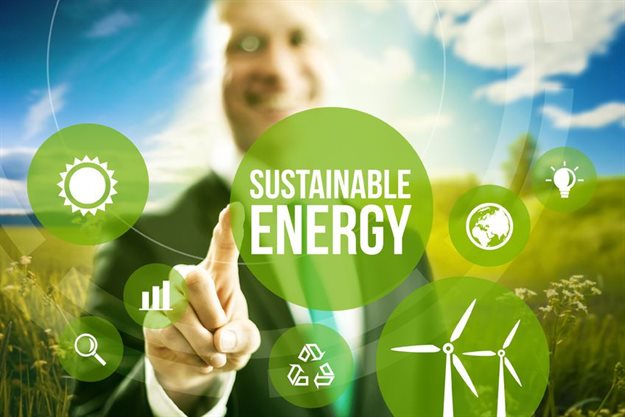
Related


Eskom’s limited emissions exemptions: A complex balancing act, practical steps going forward
Robin van Wyk 11 Apr 2025


Top stories






More news












We have seen a marked increase in climate change-related legislation and regulations in recent years, including the mandatory greenhouse gas reporting framework promulgated under the National Environmental Management: Air Quality Act, 2004 (NEMAQA); the long-awaited Carbon Tax Act, 2019 which imposes taxes on fossil fuel inputs by large industry emitters (subject to a host of allowances aiding the transitional implementation of this levy), and the draft Climate Change Bill seeking to serve as a framework to build SA's effective climate change response in the long term along a national greenhouse gas emissions trajectory.
These frameworks do not come without problems of their own, however, and the piecemeal fashion in which these laws are taking shape is problematic.
IRP 2019, published on 18 October 2019, makes it clear that SA will pursue a diversified energy mix to reduce reliance on a single energy source (coal) in line with the country’s Paris Agreement commitment. IRP 2019 acknowledges that the transition to a low-carbon economy must be timed in a manner that is "socially just and sensitive to the potential impacts on jobs and local economies".
SA's energy sector has been plagued by issues relating to infrastructure and service delivery for years. The diverse energy mix in IRP 2019 seeks to remedy this. Plans to decommission old Eskom power stations, coupled with the uptake of renewables, as well as technology such as battery storage and corridors for renewable projects, will assist in reducing red tape and facilitating renewable energy projects.
While new coal projects are not excluded, all new coal power projects must be based on high efficiency, low emission technologies and other cleaner coal technologies under IRP 2019. IRP 2019 also sets out the rate and schedule of decommissioning of Eskom's existing 16 coal-fired power plants until 2050. This appears to align with the tender published by Eskom in August 2019, for the review of the decommissioning and rehabilitation cost associated with coal, peaking and renewable power stations after life of plant. We have also recently seen the disposal of thermal coal assets by both South32 and Anglo American as international stakeholders continue to reduce exposure to coal assets.
IRP 2019 acknowledges the regulatory constraints under which Eskom's power plants must operate, namely the minimum emission standards prescribed under NEMAQA, which many of the older plants are unable to achieve, however remarks that in addressing this statutory non-compliance, a balance should be struck between energy security, poor air quality and the economic cost associated with shutting these down. Statements such as this do not appear to point clearly in the direction of "Just Transition" but rather contribute further to the muddied waters regarding policy direction in relation to air quality and GHG emissions.
Government has, however, attempted to alleviate the regulatory strain on renewable energy companies by revising the procedure for applying for environmental authorisations for large-scale wind and solar photovoltaic (PV) energy developments. Applications for environmental authorisations for certain large scale wind or solar PV facilities must follow the basic assessment procedure of the Environmental Impact Assessment Regulations, 2014, and the timeframe for decision-making purposes is 57 days. However, this process is only available for projects where the entire proposed facility will be situated in declared Renewable Energy Development Zones (REDZ).
Actions such as the changes to the listed activities requiring an environmental authorisation for certain renewable energy projects and the gazetting of eight REDZ in 2018, with three more proposed in early November 2019, are promising, and may be the key to ensuring a smooth transition to a low-carbon economy. We have seen a noticeable change in the Department of Environment, Forestry and Fisheries under Minister Barbara Creecy, which appears to be significantly more energetic and proactive and is addressing the correct environmental concerns.
While Government's policy is unquestionably supportive of renewable energy, there is a high level of environmental regulation in these areas, posing financial challenges to new entrants and significantly slowing down the development of new clean energy projects.
We have seen this in the battery technology space. Due to the substances used in certain battery technologies, some of these projects may constitute a "listed activity" under the National Environmental Management Act, 1998 (thus requiring an environmental authorisation). The reuse and/or recycling of many battery storage technologies may require a waste licence under the National Environmental Management: Waste Act, 2008, and depending on the technology in question and the location of these projects, permits may also be required under other environmental legislation such as the National Water Act, 1998; the Hazardous Substances Act, 1973; NEMAQA; and/or the National Environmental Management: Protected Areas Act, 2003.
Obtaining such permits is a costly and lengthy exercise, which may obstruct or delay development and production in these industries which may in turn hamper SA from attaining its goal of transitioning to a low-carbon economy.
While SA's policymakers are committed to moving towards attaining a low-carbon economy, the piecemeal approach towards legislation poses significant challenges to industry, increases the risk of misalignment between the different instruments, and may foster legal uncertainty. Most important, it raises further hurdles which are likely to slow down our transition to a low-carbon economy. A more holistic approach to regulatory reform may be preferable to ensure better cohesion between the different instruments and speed up the transition to a low-carbon economy.
SA’s lawmakers need to watch global trends in climate change-related legislation and investor sentiments towards green energy for future direction and to ensure the country remains competitive. Our rapidly changing energy market requires extensive regulatory review and under the stewardship of Minister Creecy we are confident the road towards a low-carbon economy can be achieved.